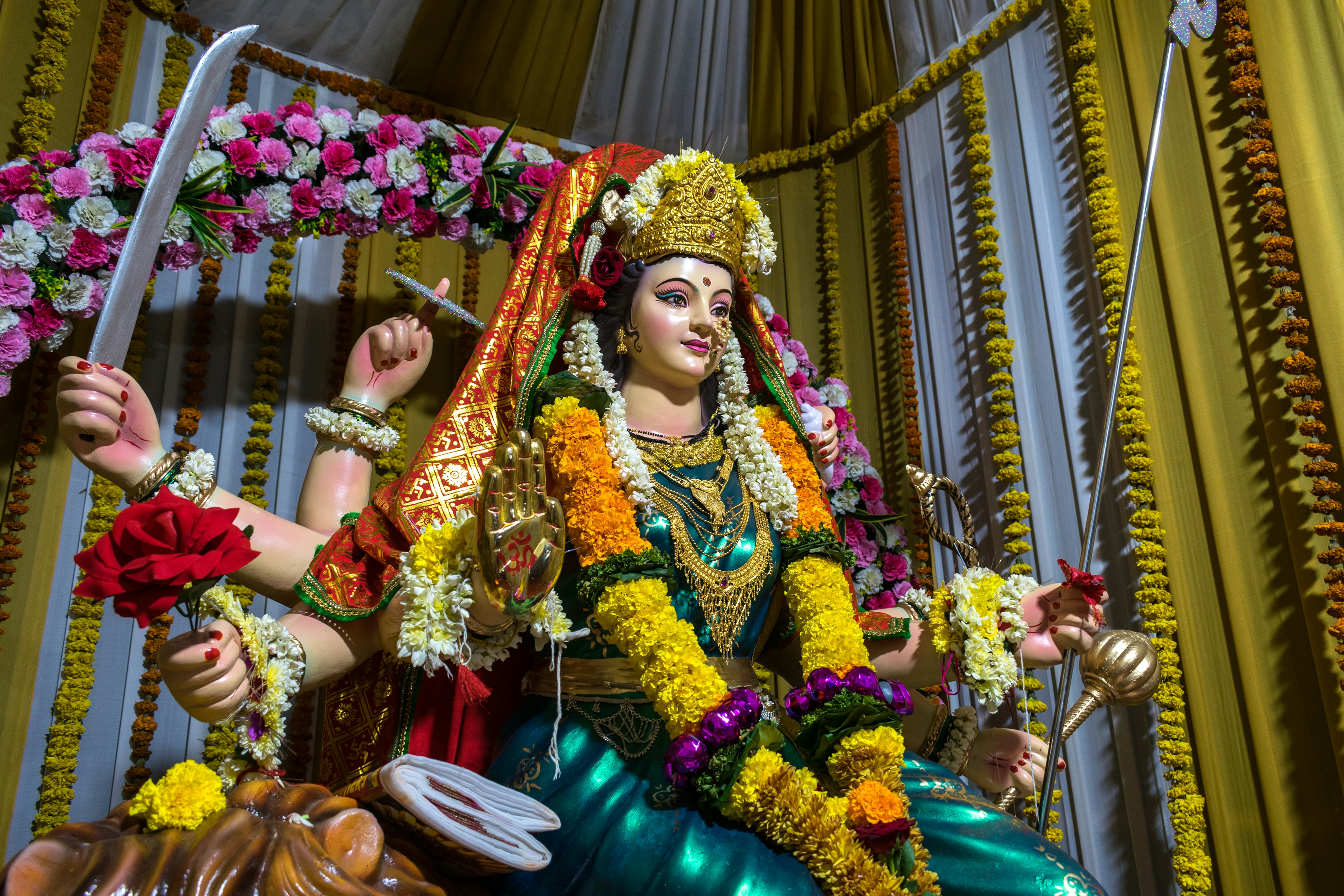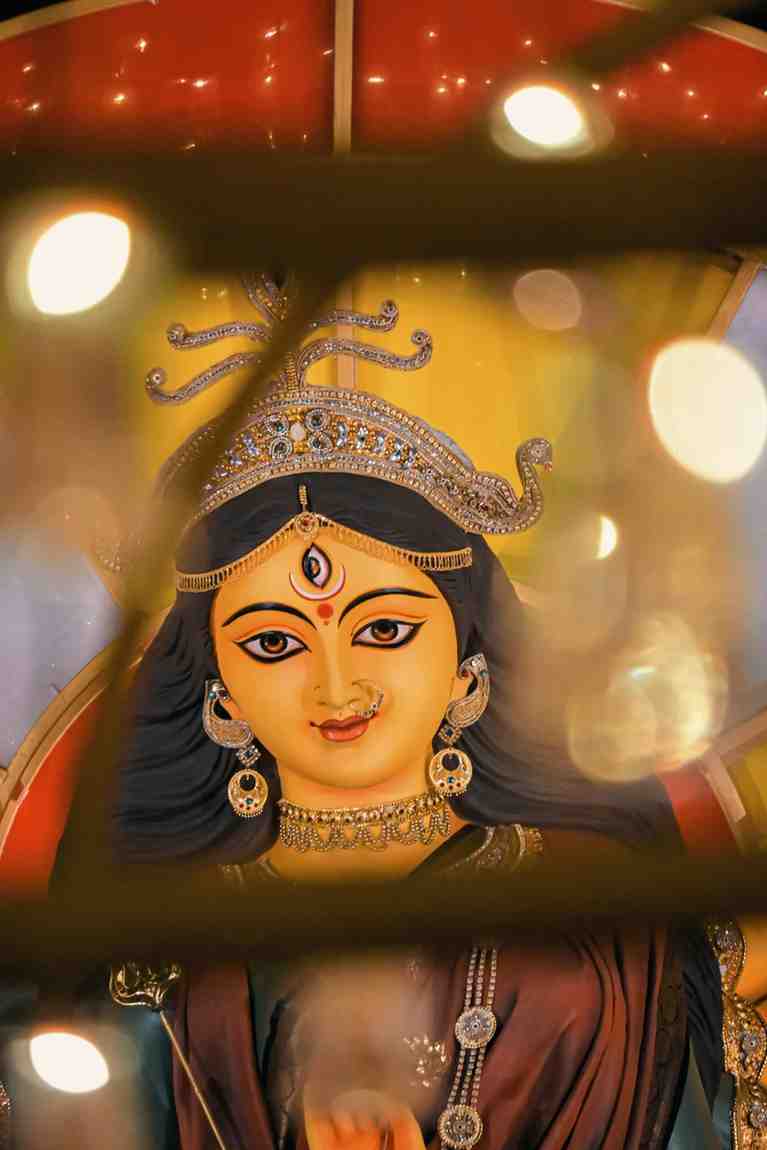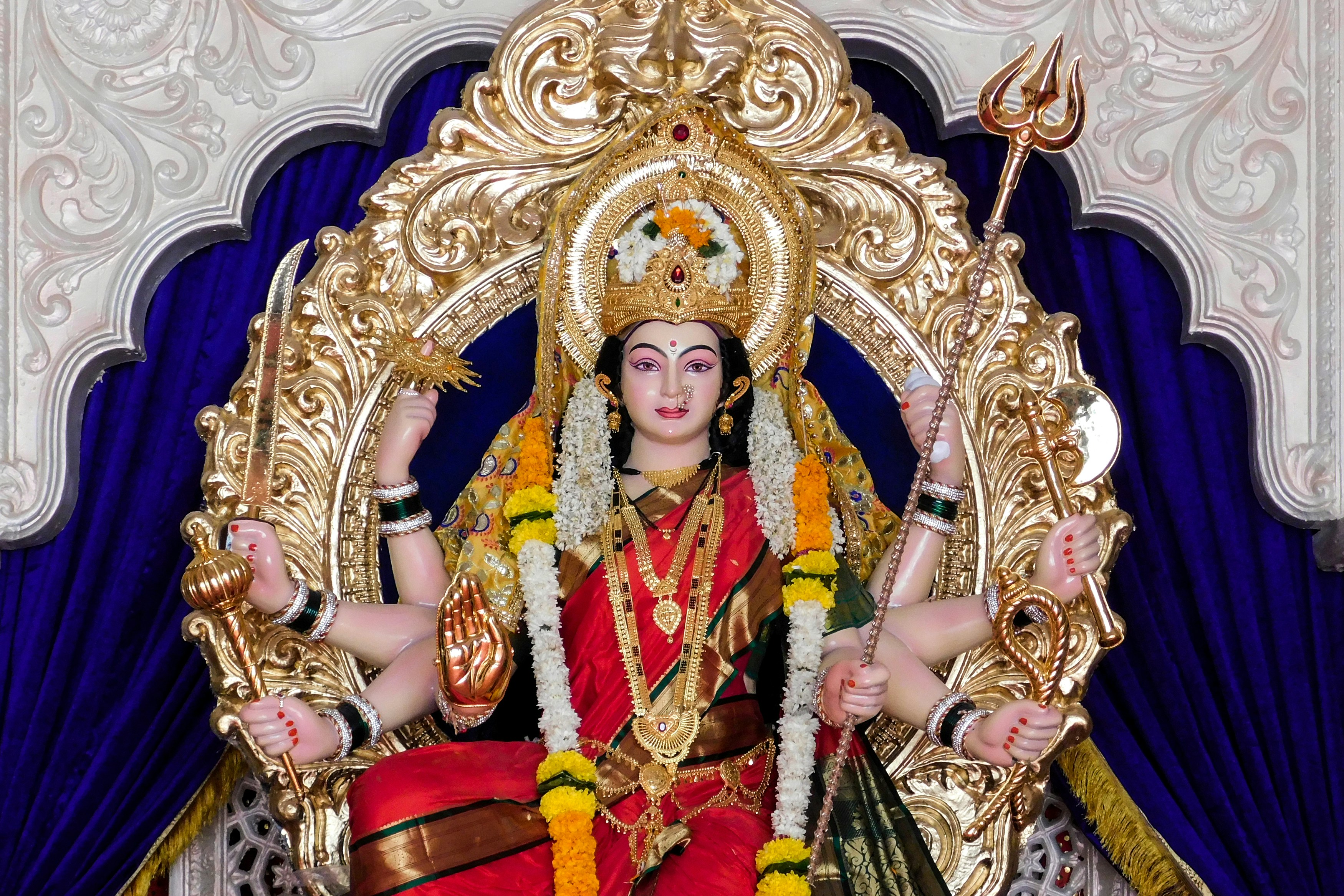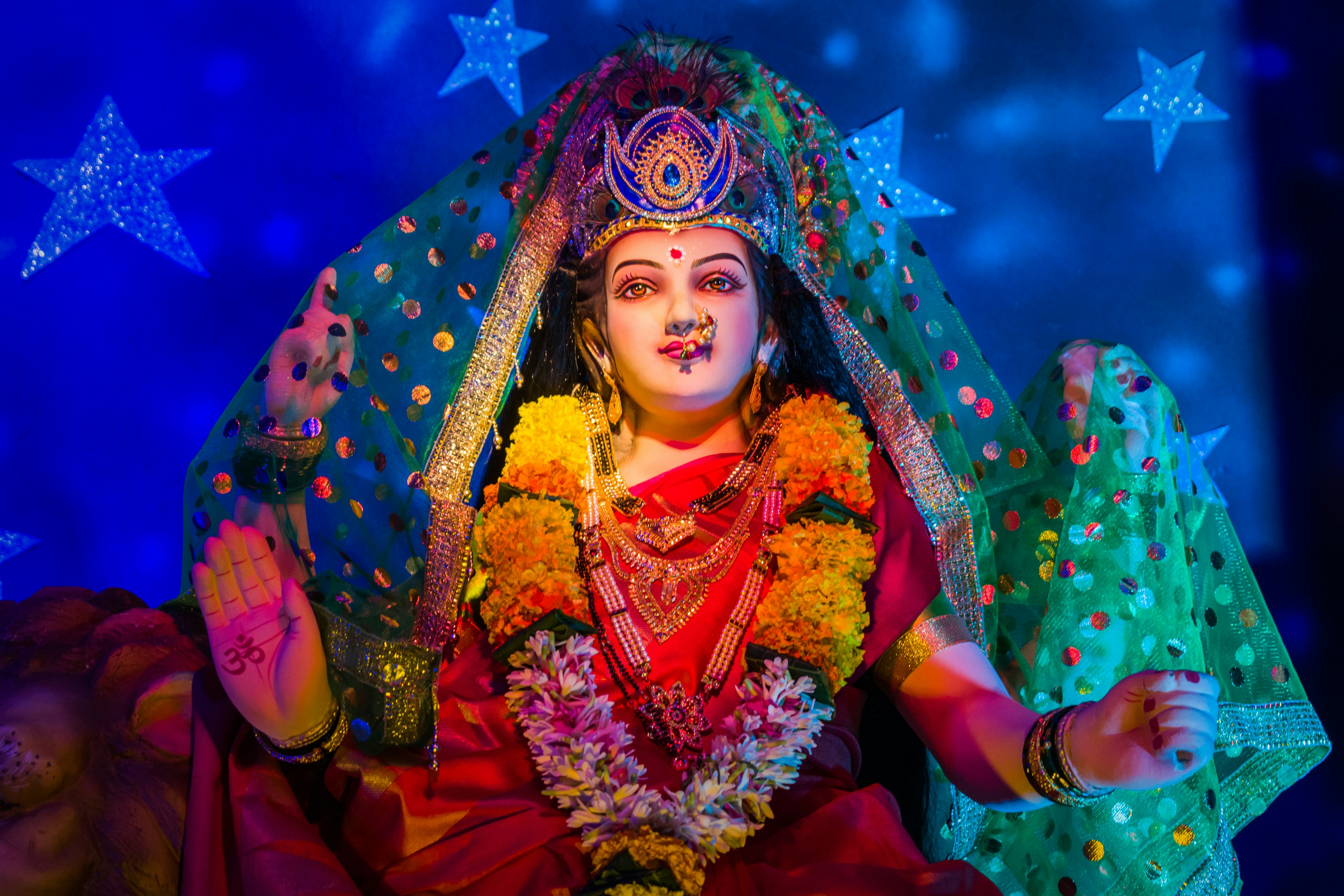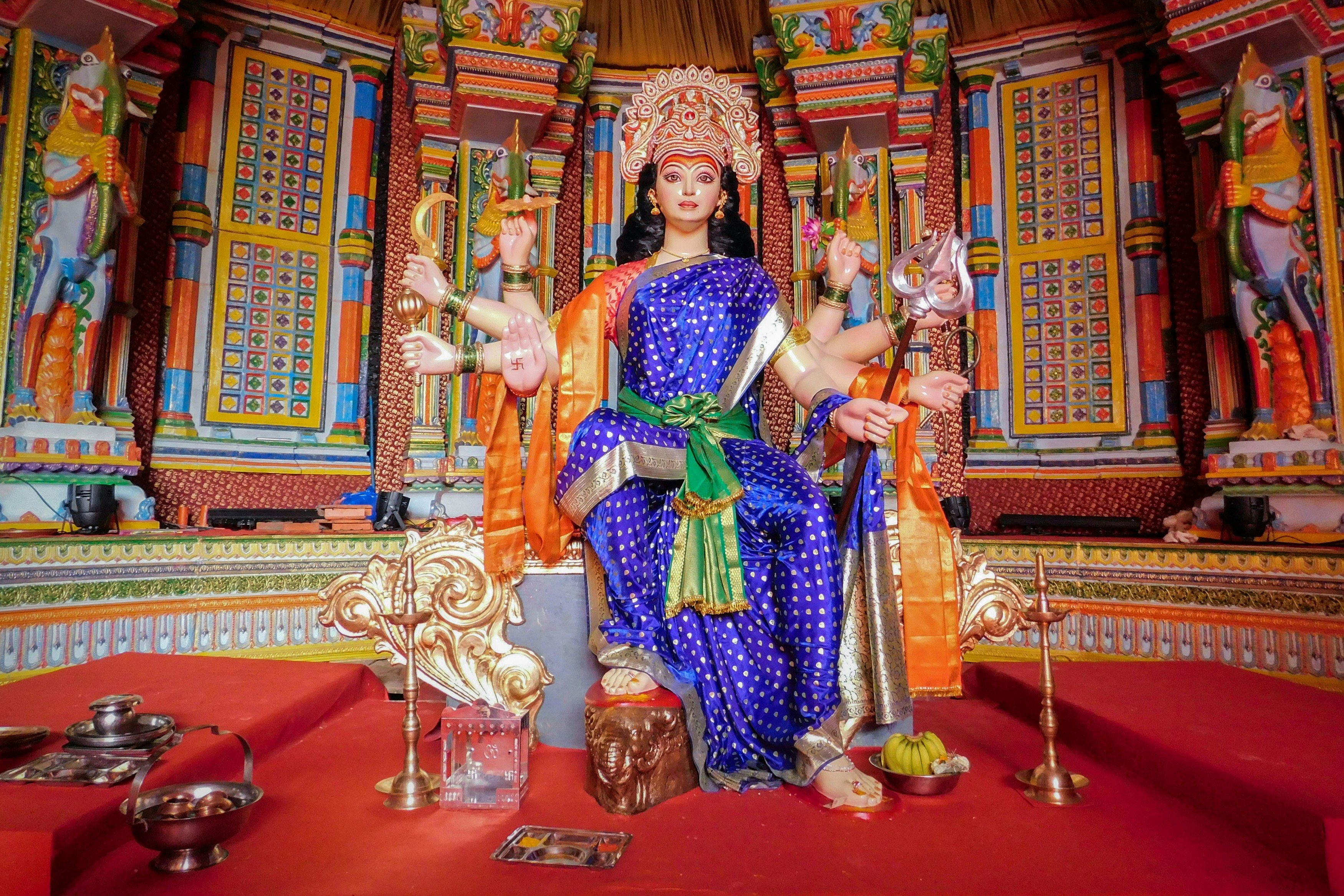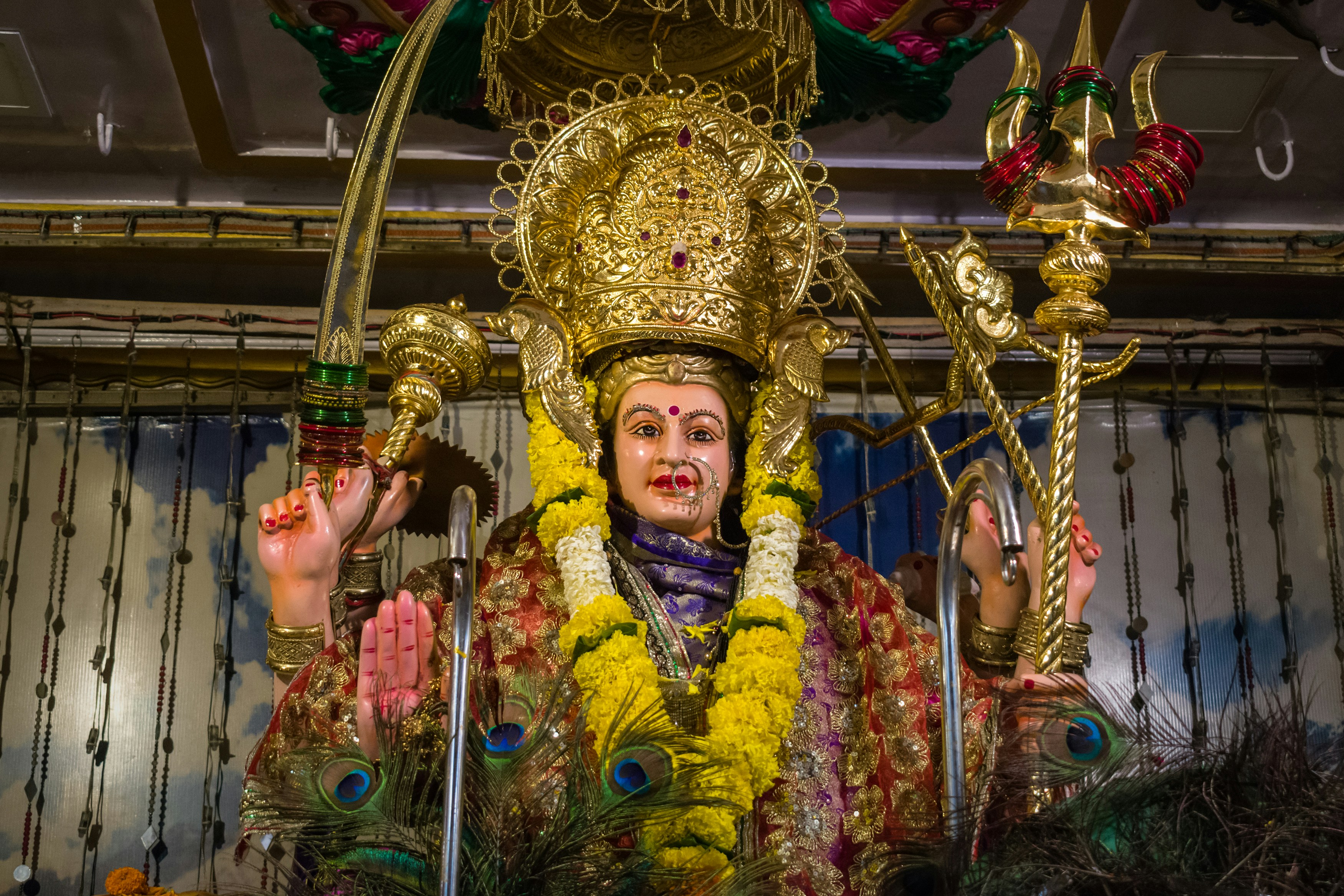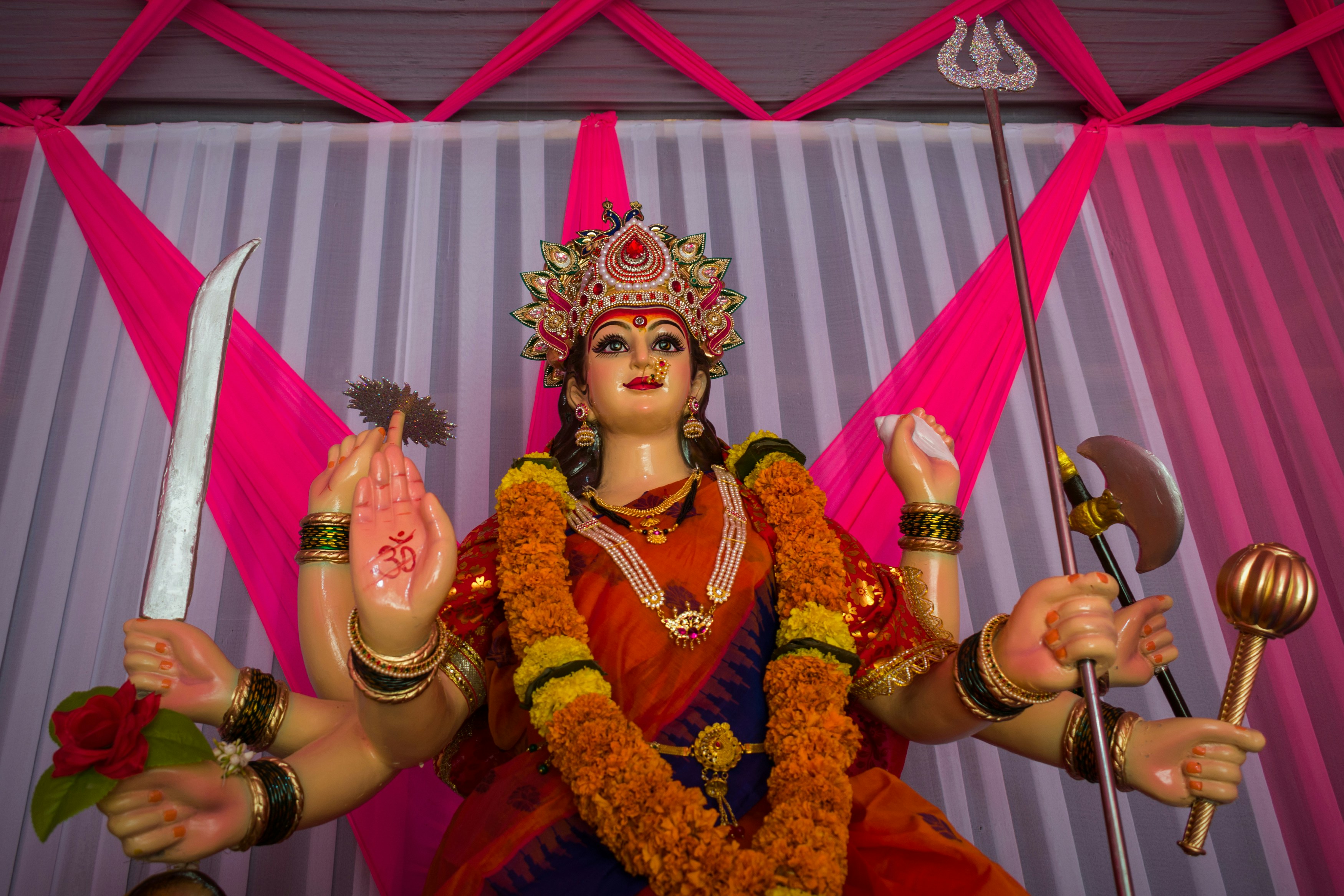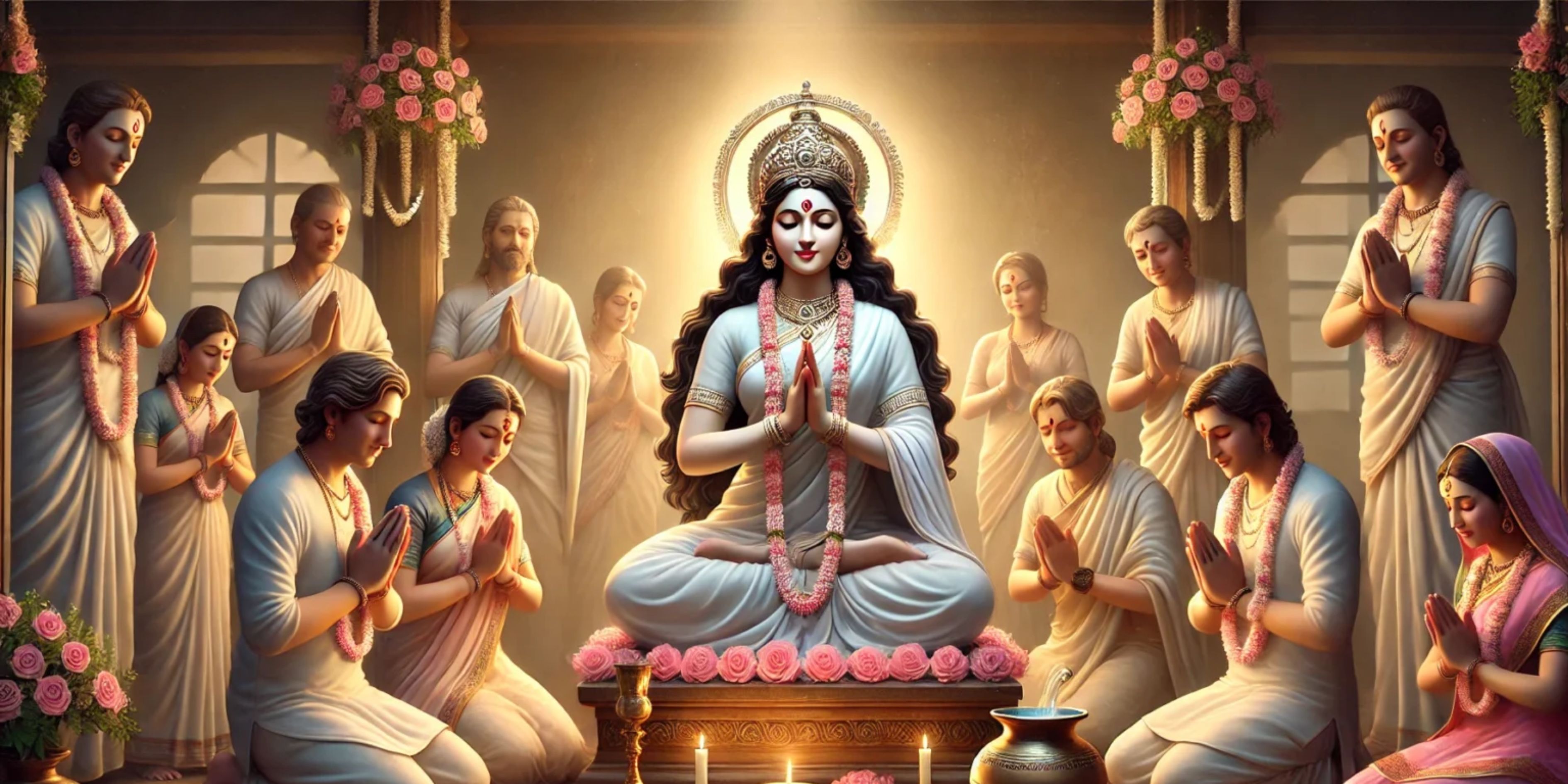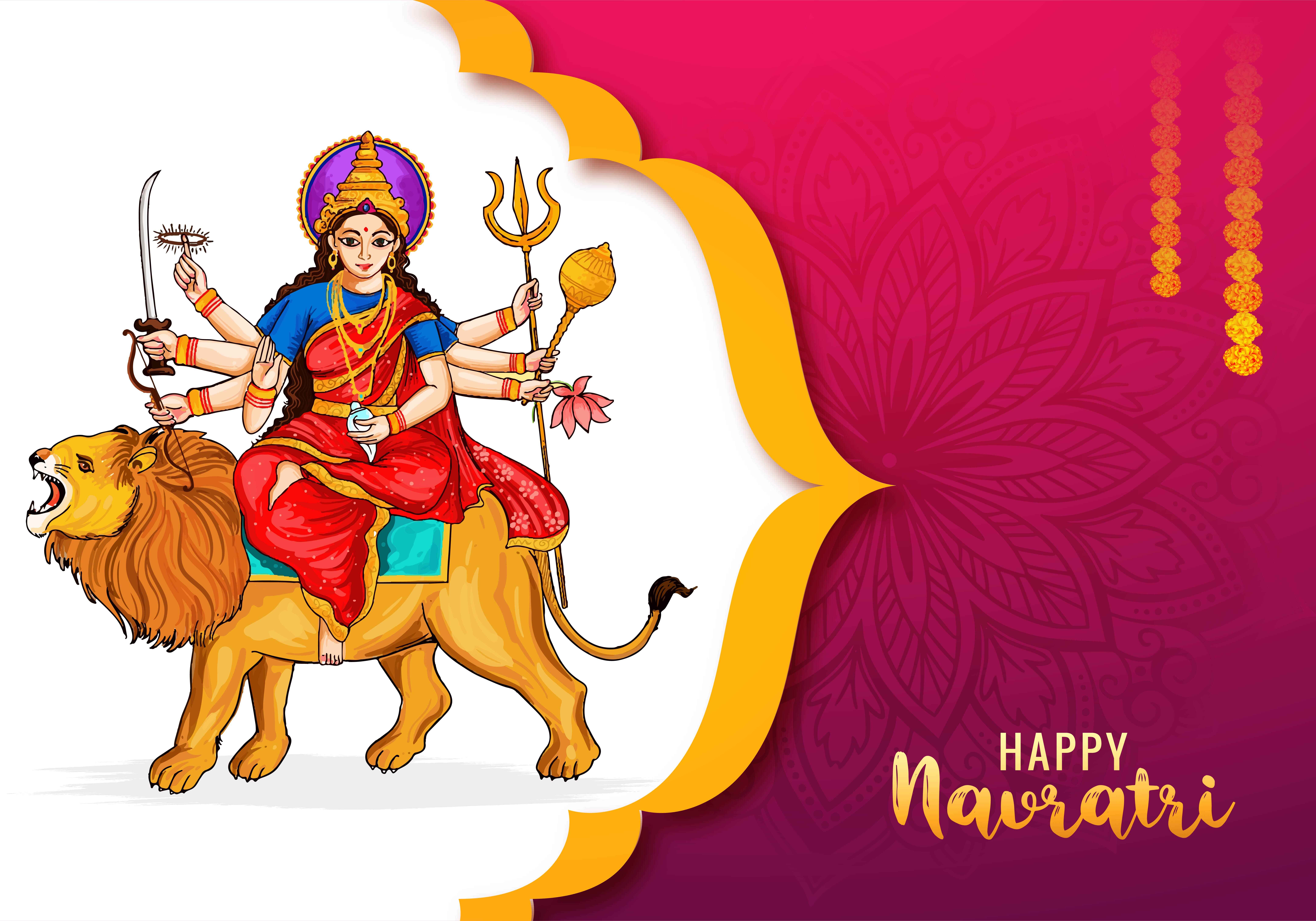What is Navaratri? | नवरात्रि का महत्व
Navaratri (नवरात्रि) is one such festival that infuses the air with energy, worship, and a touch of magic. It is all about the goddess Durga (देवी दुर्गा ), who is quintessential about courage and the triumph of goodness over wickedness. It is a nine-night celebration, with each night having a different meaning, ritual, and color attached to it.
At many homes, one can find women and girls dressed up in bright saris carrying flowers, light diyas, and offering भोग to the deity. Males and young ones are no exception and engage either by visiting pandals (पंडाल) or by helping with the cooking of traditional food. The mythology of Durga overpowering Mahishasura (महिषासुर) is not simply narrated; it is deeply lived. One can almost hear the thundering drumbeats of triumph and the mantras reverberating inside the neighborhood.
The Navaratri is never the same across all regions. In Gujarat, the evenings are for garba (गरबा) and dandiya (डांडिया). In West Bengal, it is Durga Puja (दुर्गा पूजा) as a spectacle with grand pandals, lights, and ceremonies that go on for days. But everywhere, it is about worship, celebration, and renewal.
Four Navaratris | चार नवरात्रि
Whereas each Navaratri festival is not as grand as the Sharada festival in autumn, each one of them has a peculiar character.
Sharada Navaratri | शारदा नवरात्रि
This is an important event. It is observed after the autumn harvest, normally in September and October. Followers participate in nine nights of worship of Durga and her nine avatars, festooning their houses and visiting pandals. Families are usually seen making delicacies during Navaratri days, lighting diyas, and kids playing in new clothes.
In eastern India, this overlaps with Durga Puja (दुर्गा पूजा). People compete in decorating the pandals creatively, and evenings are filled with cultural performances. In Gujarat, communities come together for garba (गरबा) nights. Even if you don’t dance, the music pulls you in; you can’t help but tap your feet.
Chaitra Navaratri | चैत्र नवरात्रि
Chaitra Navaratri, also referred to as Vasantha Navaratri (वसंत नवरात्रि), is in spring, normally March–April. The air is fresh in smell, flowers are blooming, and it seems nature itself is rejoicing.
That last day coincides with Rama Navami (राम नवमी), so there are cultures that celebrate both. In Maharashtra, it is Gudi Padwa (गुड़ी पड़़वा); in Karnataka and Andhra Pradesh, it is Ugadi (उगादी); and in Kashmir, it is Navr (.
Devotees fast, clean their homes, and decorate them with rangoli. They worship Durga and her forms, and it’s a time for reflection, new beginnings, and preparation for the year ahead.
Magha Navaratri | माघ नवरात्रि
Magha Navaratri is quiet. It is celebrated in January–February. People celebrate it personally or in their town.
The fifth day is Vasant Panchami (बसंत पंचमी) and is in honor of goddess Saraswati (देवी सरस्वती). Students, artists, and craftsmen clean out their instruments, books, or equipment and pray. In certain parts, children fly kites (पतंगबाजी), and so the day is spirited even if the other days are observed with quiet.
It is not about great performances; it is about inner reflection, worshiping, and spring preparations.
Ashada Navaratri | आषाढ़ नवरात्रि
Ashada Navaratri arrives with the monsoon, in June–July. It is also a secret Navaratri, a "Gupta" Navaratri. The farmers wish for good rains and harvests, while craftsmen bless their instruments. It is less busy but significant.
Others do Ayudha Puja (आयुध पूजा), in which they decorate their instruments, machines, and tools. It is a subtle message that worship is not just for the shrines—it is also for daily life.
Nine Days of Navadurga | नौ रूपों में देवी दुर्गा
Each day, there is a day goddess, an olor, and a lesson. You read the color of the day, present flowers, and listen to the tales.
Day 1 – Shailaputri (शैलपुत्री): Daughter of the mountains, rides a bull. Color: yellow (पीला).
Day 2 – Brahmacharini (ब्रह्मचारिणी): Peaceful and strong. Color: white (सफेद).
Day 3 – Chandraghanta (चंद्रघंटा): Brave and beautiful. Color: grey (धूसर).
Day 4 – Kushmanda (कुश्मांडा): Creative energy. Color: green (हरा).
Day 5 – Skandamata (स्कंदमाता): Protective mother. Color: green (हरा).
Day 6 – Katyayani (कात्यायनी): Warrior goddess, red (लाल).
Day 7 – Kalaratri (कालरात्रि): Fierce destroyer. Color: royal blue (नील).
Day 8 – Mahagauri (महागौरी): Peaceful and wise. Color: pink (गुलाबी).
Day 9 – Siddhidatri (सिद्धिदात्री): Bestower of blessings. Color: purple (बैंगनी).
These are no mere rituals. Hearing the tales, observing the rituals, even glimpsing neighbors' ornaments, you get a feeling that you are a part of centuries of tradition.
Vijayadashami / Dussehra | विजयादशमी / दशहरा
The tenth day is one of rejoicing. In eastern India, it is Durga's triumph over Mahishasura. Otherwise, it is Lord Rama's triumph over Ravana. Idols are immersed in rivers, effigies of Ravana are burnt, and Ayudha Puja (आयुध पूजा) is observed.
Children and students receive blessings. Workers and craftsmen thank their tools. It is a day that is both joyous and introspective, a breather before life moves on and on with Deepavali (दीपावली) preparations.
Fasting and Nutrition | व्रत और पोषण
Fasting is central to Navaratri. There are those who consume milk and fruits; there are those who have one meal a day. Kept away are meat, eggs, garlic, onions, wheat, and rice. Vijayadashami is followed nine days later by Navaratri. Special Navaratri food (नवरात्रि व्यंजन) such as sabudana khichdi (साबूदाना खिचड़ी) and samak rice (स्मक चावल) are made. Milk sweets are also prepared. Fasting imparts.
Cultural Importance | सांस्कृतिक महत्व
It is not religious alone; it is social and cultural. Pandals (पंडाल) are brightly decorated, garba (गरबा) and dandiya (डांडिया) infuse the nights with vigor, and performances of classical music preserve traditions. Students, artists, and laborers revere their tools and instruments on the day of Ayudha Puja.
It imparts values such as bravery (साहस), commitment (भक्ति), self-discipline (अनुशासन), and the notion that righteousness ultimately prevails (सत्य की विजय). Families unite, exchange narratives, and transmit customs to subsequent generations.
Conclusion | निष्कर्ष
Navaratri is bigger than a festival. It's worship, culture, reflection, and celebration rolled into one. Every Navaratri is Sharada, Chaitra, Magha, and Ashada in its own turn with its own tale, ritual, and lesson. Navadurga's nine days impart courage, wisdom, and spirituality. Vijayadashami makes sure that everyone remembers that what is good ultimately conquers what is bad.
It preserves the cultural heritage through fasting, religious worship, family get-togethers, and other celebrations, and hence connects past and present experiences through a living dynamic relationship.

